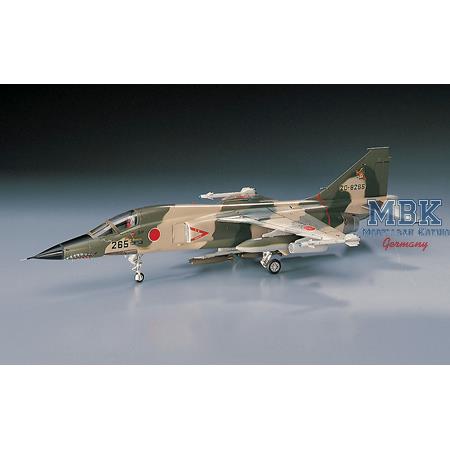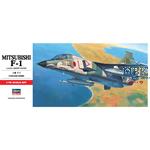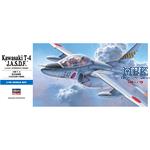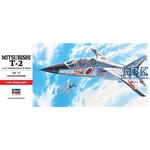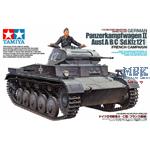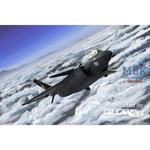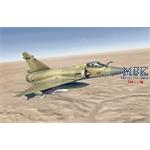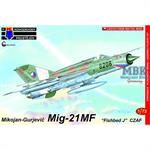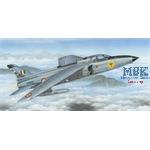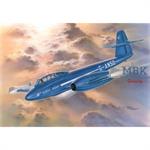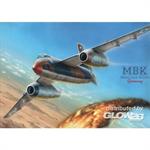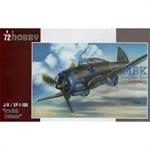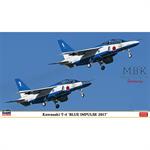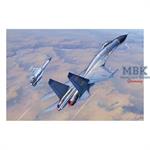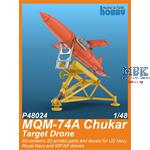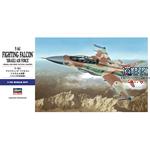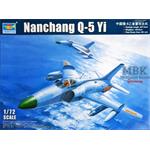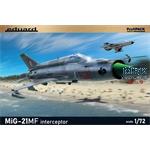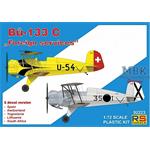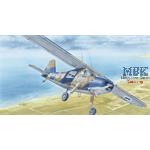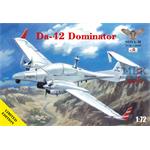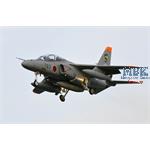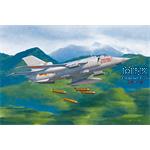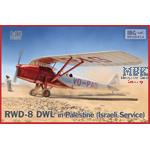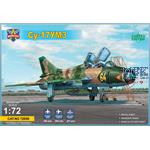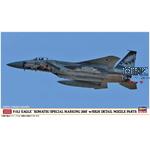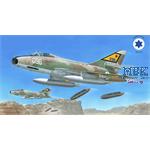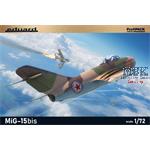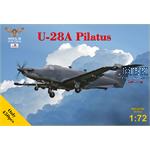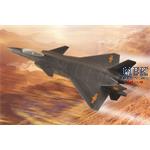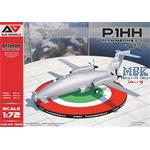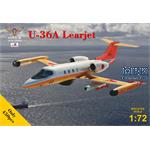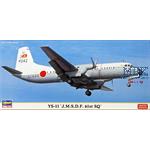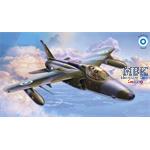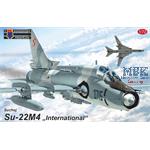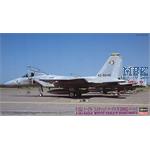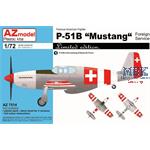Mitsubishi F-1 J.A.S.D.F. Support Fighter (C3)
HAS01333
HASEGAWA
1:72

- Scale 1:72
- not built, not painted
- Paint and glue not included
As the first domestically produced supersonic jet fighter, development began in 1972, and procurement began in 1975.
In the past, the F-86F was used as a support fighter, but the Japan Air Self-Defense Force considered introducing the F-5E Tiger II to operate a full-scale support fighter, but decided to use a fighter modified from the T-2 trainer, which was in operation at the time.
Development of the FS-T2 Kai (later the F-1) began, and for this purpose the mass-produced T-2 No. 106 and No. 107 were completed as special T-2 specifications for flight tests, and various system tests and flight tests were conducted. Based on the results of these various tests, the Director-General of the Defense Agency approved the use of the unit on November 14, 1976, and at the same time the official name was decided from FS-T2 Kai to the support fighter F-1.
The deployment of the F-1 began in fiscal year 1977, and it was deployed to the 3rd and 8th Squadrons at Misawa Air Base, and the 6th Squadron at Tsuiki Air Base,
replacing the F-86Fs.
The F-1 is a support fighter, but is also used as an interceptor.
For this reason, it is equipped with a wide variety of armaments. For interception missions, it is equipped with Sidewinder air-to-air missiles, and for support combat, it is equipped with 500lb bombs, anti-ship missiles, 70mm or 127mm rockets, etc.
In order to carry out such a wide variety of missions, when the F-1 was modified from the T-2, it had its search and tracking radar strengthened, a radio altimeter and atmospheric characteristic computer added, radar warning devices, strike cameras, etc. added, and additional modifications were made such as mounting pylons for armaments.
Among these modifications and additional equipment, the distinctive equipment of the F-1 is the J/AWG-12 radar and J/ASQ-1 control computer.
This equipment is important for accurate bombing.
It calculates information from radar, head-up display (HUD), inertial navigation system, radio altimeter, and atmospheric characteristic computer, and outputs the most suitable information to the HUD and radar.
This system also has an automatic mode, where the impact point and the flight path to that point are projected on the HUD, and when the pilot operates the bomb, it calculates the optimal time to release the bomb and automatically releases it.
The F-1 began to be equipped with an autopilot in 1983, while in production, and it was also installed on previous aircraft during regular repairs.
This reduced the burden on the pilot and allowed the aircraft to carry out attack missions more reliably.
Also, due to the nature of the mission, it often flew at extremely low altitudes, which made collisions with birds a problem, but this was solved by making the fixed windshield out of sturdy polycarbonate
and using a one-piece canopy with no frame.
Data:
- Crew: 1
- Wingspan: 7.88m
- Length: 17.85m
- Height: 4.45m
- Maximum takeoff weight: 13,700kg
- Engine: TF-40-IHI-801A Adore
- Thrust: 2,136kg (3,207kg when using A/B) x 2
- Maximum speed: Mach 1.6/11,000m
- Fixed armament: M61 A1 20mm Vulcan cannon
- First flight: June 16, 1977 (FS-T2 modified)
Write now your personal experience with this article and help others with their purchase decision.

